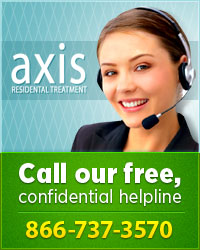
Naloxone/Narcan

Opiate drugs like heroin, Vicodin and OxyContin can place the brain in a state of suspended animation. Electrical signals are dampened and muffled as the drugs float through the body, breathing slows, and the heart starts beating with less intensity. The person might feel sleepy and relaxed, floating away into a chemical-induced haze, but the sedation caused by these drugs can take a sinister turn, and the person could become so very sedated that the impulse to live might slip into nothingness. Breathing grinds to a halt, the person turns blue and the skin feels cold and clammy. It’s a life-threatening emergency, and the medication Narcan can help. This drug can work quickly, stripping away the sedation and restoring the person to a normal degree of function.
Opiate-Agonist Action
Opiate drugs seek out specific receptors in the brain and in the body, and when they’ve found these receptors, they nestle in for a tight fit and start a series of chemical reactions. It’s a bit like placing a battery inside of a flashlight. Only the right battery will fit, but when the battery is in place, the light can come on quite easily. Narcan, also known by the generic name naloxone, works a little like cotton stuffed inside the flashlight. When this medication is in place, the drug can’t fit into its receptor sites, and no chemical reactions can take hold.
Narcan can also bump existing drugs off their receptors, stopping existing reactions in their tracks. This is the main benefit of this drug, as it can stop a life-threatening complication from taking hold. As a result, some community groups have handed out the medication to those who take opiate drugs, and they’ve shown those drug users how to administer the medication to people who are overdosing. According to an overview article on the issue published in Time, about 50,000 doses of naloxone have been distributed in programs like this since 1996, and those doses have been responsible for 10,000 overdose reversals. That’s a significant accomplishment.
Use in Treatment Facilities
People who are in the throes of an overdose often head straight to the hospital for treatment. When they arrive, they may be showing serious medical signs of an overdose, including:
- Unresponsiveness
- Vomiting
- Faint heartbeat
- Slow or absent breathing
- Cool body temperature
Moments after being provided with naloxone, these people may spring back to robust health and they might be tempted to go right back home. This isn’t always the best idea. While naloxone can stop an overdose in progress, the medication might wear off long before the active drugs in the person’s body have dissipated. The person might endure another overdose, if the person feels the impact of those drugs without the help of another dose of naloxone. A study in the journal Prehospital Emergency Care found no instances of death due to naloxone administration in people who were released moments later, which seems to indicate that most people don’t experience life-threatening overdoses multiple times from the same drug dose, but it is possible that such a complication could take place.
Once people have recovered from their overdose, and urine and blood tests confirm that the risk of future complications is low, rehab programs can begin. Here, the person can learn new habits that could keep a return to drug use at bay, and keep terrible overdoses from happening in the future. In some cases, people keep taking naloxone while they begin therapy. The drug can keep people from feeling the euphoric effects of drugs, and breaking the link between drug use and pleasure could be key to long-term sobriety success. For example, a study in the Journal of Substance Abuse Treatment found that providing naloxone to people in therapy resulted in an augmented interest in therapy and an improvement in mood. It’s not clear why some people would experience this kind of change, but it is clear that the drug has the power to help people to stay in therapy without relapsing to drug use, and it could be a valuable tool that therapists could add to the addiction treatment mix.
If you have any questions about how addiction treatment works or you need help in finding an appropriate program for you or someone that you love, please call us. We provide a medically supervised detox program here at Axis, and we can also provide residential treatment for almost any kind of addiction issue. Please call us to find out more.






